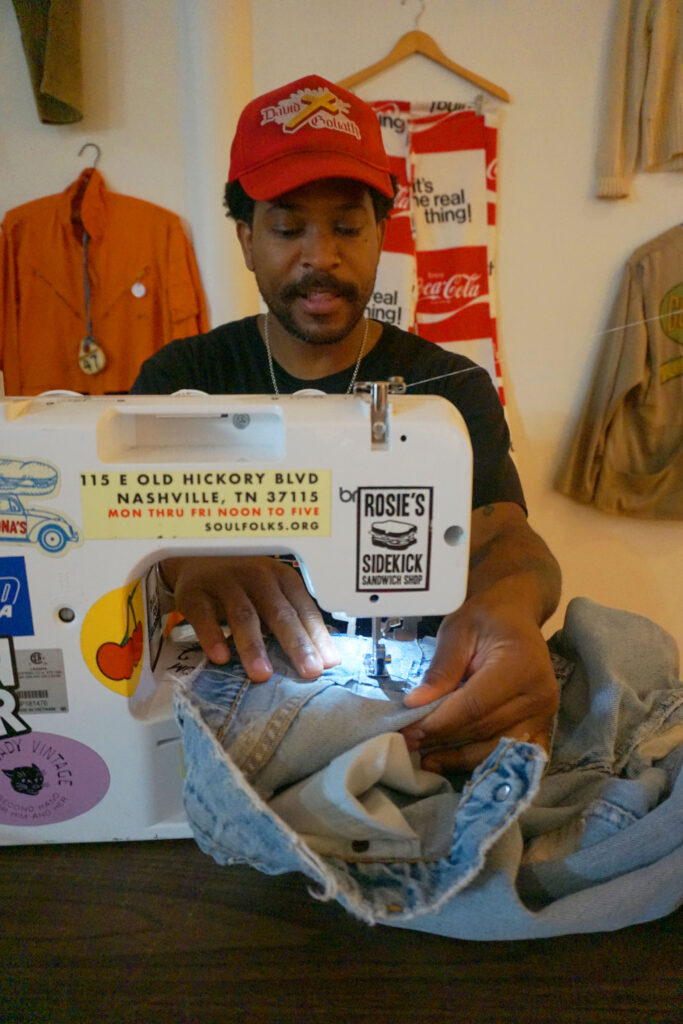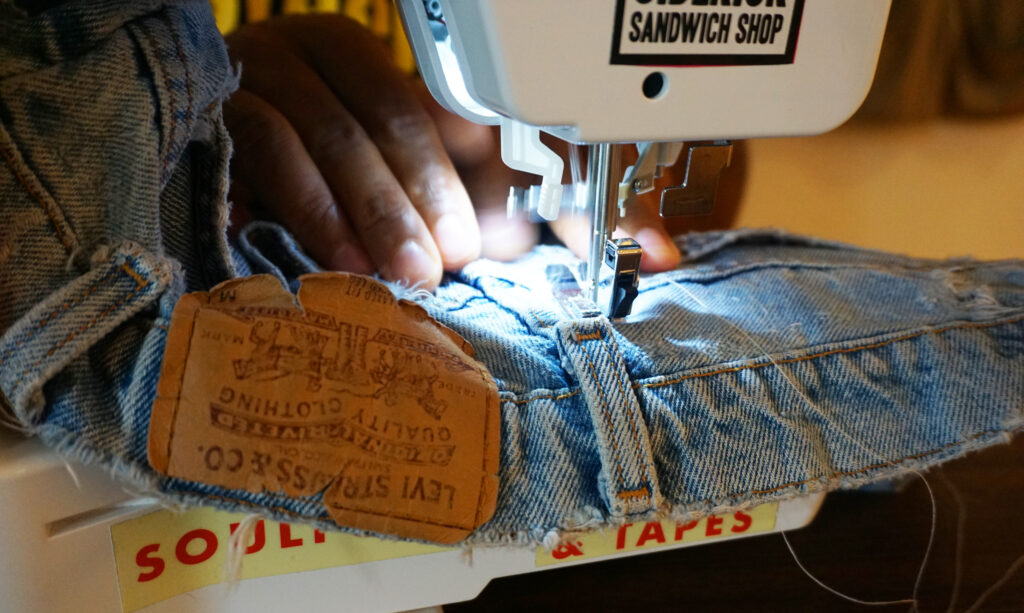As the world’s second hand clothing market is expected to double to $350 billion by 2027, textile waste still remains a massive problem as much of the West ships off unwanted materials to the global south.
Kantamanto Market in Accra, Ghana sees nearly 8 million pounds of used clothing every week, as many garments clog the sewage systems and pollute the country’s beaches. In Chile, the largest importer of secondhand clothing in Latin America, a mound of discarded clothes the size of the Brooklyn Bridge accumulates in the Atacama Desert.
Facing the constricting damages of textile waste, menders, sewers, and upcyclers are turning back to their roots to preserve the lifespan of clothing and keep garments out of landfills.
Mending as tradition, not trend
“We’re actually handing down an old tradition that seems brand new,” said Iickomique Belmontes, a “green” artist committed to natural materials and dyes, who leads mending classes in Chicago.
In partnership with Emmanuel Edwards, owner and operator of Chicago-based vintage store the Goody Vault, the duo launched a mending class series earlier this year out of the store’s vintage showroom.

“It’s funny when we talk about this stuff because this is a poor man’s practice,” said Edwards. “This was birthed out of hardship and limited resources and now everybody loves it.”
Edwards works to repair and recreate pieces from as early as the 1910s, with vintage patchwork denim jeans, flannel shirts, and military wear adorning the walls of his showroom. The duo relay the strategy behind mending with similarly-weighted materials and the intricate threading patterns that can be used to integrate new colors and textures into garments. A sewing machine sits in the middle of Edwards’ showroom as he meticulously reworked a vintage pair of Levi’s jeans.
Growing up in Alabama, like many other Black Southerners, Edwards recounts his familial connection to mending and quiltmaking from tattered textiles.
“My grandmother mended our clothes—she made quilts and made everything out of scraps, so we’re just [teaching] that in another way,” Edwards said.
The mending series, born out of a push for creative sustainability, invites visitors to bring in potentially worn clothing, use available scraps and take something as simple as a single needle and thread to extend the life of their loved apparel.
Recognizing a gap between secondhand clothing and upcycled clothing has been a major feat for independent merchandisers— the Environmental Protection Agency estimated 62.5% of donated clothes ended up in landfills in 2018 alone.
Consumption and textile waste has gotten so high the EPA officially added a fourth “R” to the recommended efforts of waste management in the face of hyperconsumerism: refuse.
“Teaching to sew is teaching the importance of using the resources that are already here,” said Hekima Hapa, founder of Black Girls Sew.
The Brooklyn nonprofit is dedicated to teaching today’s children, often bombarded by messaging from fast fashion brands, to sew and mend higher quality and inherited textile materials.
“For black and brown communities, I think [sewing] is heavily driven by need,” Hapa said. “During the pandemic, when we saw things slow down, we didn’t have access to clothing and had to really think about how meaningful it is to have these fabrics.”
Not only has the nonprofit seen interest from children, but immense support from community members, donated textiles and raising funds to revitalized the tradition of mending into the next generation.

Black Girls Sew actively combats the promises of fast fashion, bringing children on thrift store field trips to purchase denim jackets and learn to customize them through sewing and mending. The organization even runs a summer fashion camp, where enrolled students, thanks to community donations, are able to have their very own sewing machine to take home.
“Find those free resources, invite people and put up signs in your neighborhood,” Hapa said about her journey in building Black Girls Sew. “ And more often than not, you’ll find people who are just like you.”
‘At least buy smart’
In the face of admittedly dismal predictions and estimates for the future of textile waste, upcyclers are leading the education of sustainable alternatives and putting tools into the hands of their community to mitigate future damage.
These forms of textile preservation have measurable impacts, too. Extending the lifespan of a garment by nine months could reduce its environmental impact by roughly 20-30% each, according to the Waste & Resources Actions Programme (WRAP).
“Consume what you want secondhand, but be mindful of keeping it for a while, fixing it and giving it new life,” said Edwards. “We can’t stop people from buying but at least buy smart.”
